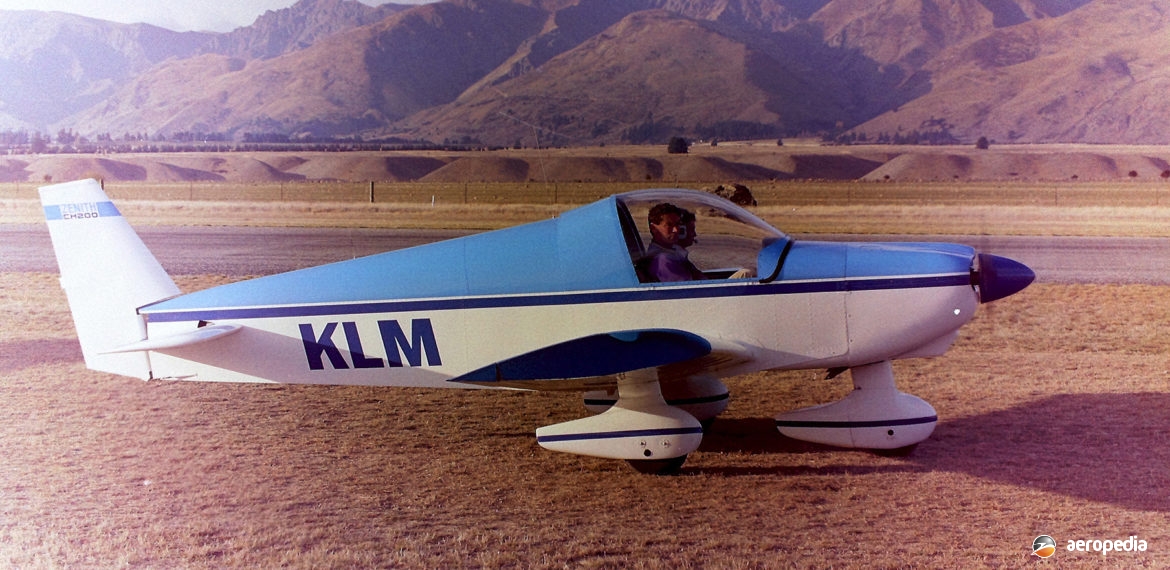Photograph:
Zenair CH-200 ZK-KLM (c/n AACA/1077) visiting Warbirds over Wanaka in New Zealand, April 1992 (David C Eyre)
Country of origin:
Canada
Description:
Two-seat light sport monoplane
Power Plant:
One 75 kw (100 hp) Continental O-200 four-cylinder horizontally-opposed air-cooled engine
Specifications:
- Wingspan: 7.0 m (23 ft)
- Length: 6.25 m (20 ft 6 in)
- Height: 2.11 m (6 ft 11 in)
- Wing area: 9.80 m² (105.5 sq ft)
- Max speed at sea level: 237 km/h (147 mph)
- Cruising speed at 75% power at sea level: 209 km/h (130 mph)
- Stalling speed flaps down: 85 km/h (53 mph)
- Service ceiling: 4,602 m (15,100 ft)
- Rate of climb: 234 m/min (800 ft/min)
- Range: 837 km (520 miles)
- Fuel capacity: 72.5 litres (16 Imp gals)
- Empty weight: 408 kg (900 lb)
- Loaded weight: 658 kg (1,450 lb)
History:
The Zenair CH-200 is one of a series of light aircraft designed by Christopher Heintz, who for a period worked for Avions Pierre Robin in France, it being a two-seat all-metal aircraft designed to meet the requirements of the amateur construction market, the prototype being designed in France and making its first flight on 22 March 1970. In 1973 Mr Heintz emigrated to Canada where he continued to design aircraft and set up a company known as Zenair which, over the years, has designed and provided kits for a range of light aircraft. At one stage his early designs were known as the Heintz Zenith and were registered in Australia as such.
Plans were produced for a number of derivatives of the original design which were all of all-metal construction and seating two side-by-side with engines ranging in the 63 to 119 kw (85 to 160 hp) range. Plans were sold in the United States and the first completed flying for the first time in October 1975, some hundreds of sets of plans being sold. At the 1976 EAA event at Oshkosh in Wisconsin, USA an example was built by volunteer labour in eight days to show how quickly the aircraft could be completed.
Three main variants of the CH-200 series were produced, the CH-200 being the initial model for private use for cross-country touring but also being able, with the necessary alterations to the engine, be used for limited aerobatics. It could be fitted with a tailwheel or tricycle undercarriage, and examples in Canada were fitted with floats and skis.
The CH-250 was an improved model with an increased fuel capacity, a larger baggage area, extra side windows, and forwaard sliding canopy. The CH-250TD was a model particularly aimed at the market for those who wished to build with a tailwheel undercarriage.

